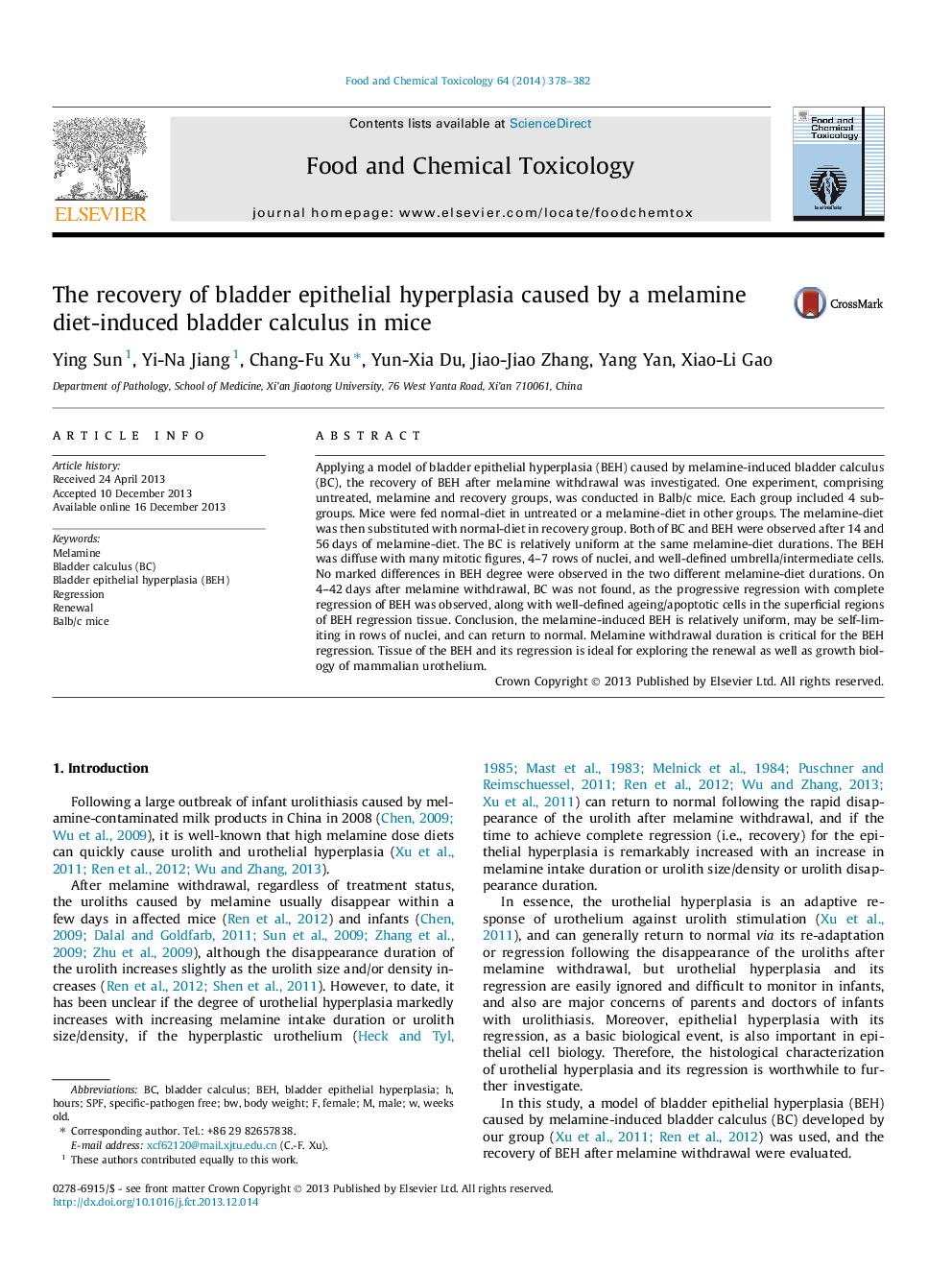| Article ID | Journal | Published Year | Pages | File Type |
|---|---|---|---|---|
| 5850953 | Food and Chemical Toxicology | 2014 | 5 Pages |
Abstract
Applying a model of bladder epithelial hyperplasia (BEH) caused by melamine-induced bladder calculus (BC), the recovery of BEH after melamine withdrawal was investigated. One experiment, comprising untreated, melamine and recovery groups, was conducted in Balb/c mice. Each group included 4 subgroups. Mice were fed normal-diet in untreated or a melamine-diet in other groups. The melamine-diet was then substituted with normal-diet in recovery group. Both of BC and BEH were observed after 14 and 56Â days of melamine-diet. The BC is relatively uniform at the same melamine-diet durations. The BEH was diffuse with many mitotic figures, 4-7 rows of nuclei, and well-defined umbrella/intermediate cells. No marked differences in BEH degree were observed in the two different melamine-diet durations. On 4-42Â days after melamine withdrawal, BC was not found, as the progressive regression with complete regression of BEH was observed, along with well-defined ageing/apoptotic cells in the superficial regions of BEH regression tissue. Conclusion, the melamine-induced BEH is relatively uniform, may be self-limiting in rows of nuclei, and can return to normal. Melamine withdrawal duration is critical for the BEH regression. Tissue of the BEH and its regression is ideal for exploring the renewal as well as growth biology of mammalian urothelium.
Related Topics
Life Sciences
Agricultural and Biological Sciences
Food Science
Authors
Ying Sun, Yi-Na Jiang, Chang-Fu Xu, Yun-Xia Du, Jiao-Jiao Zhang, Yang Yan, Xiao-Li Gao,
